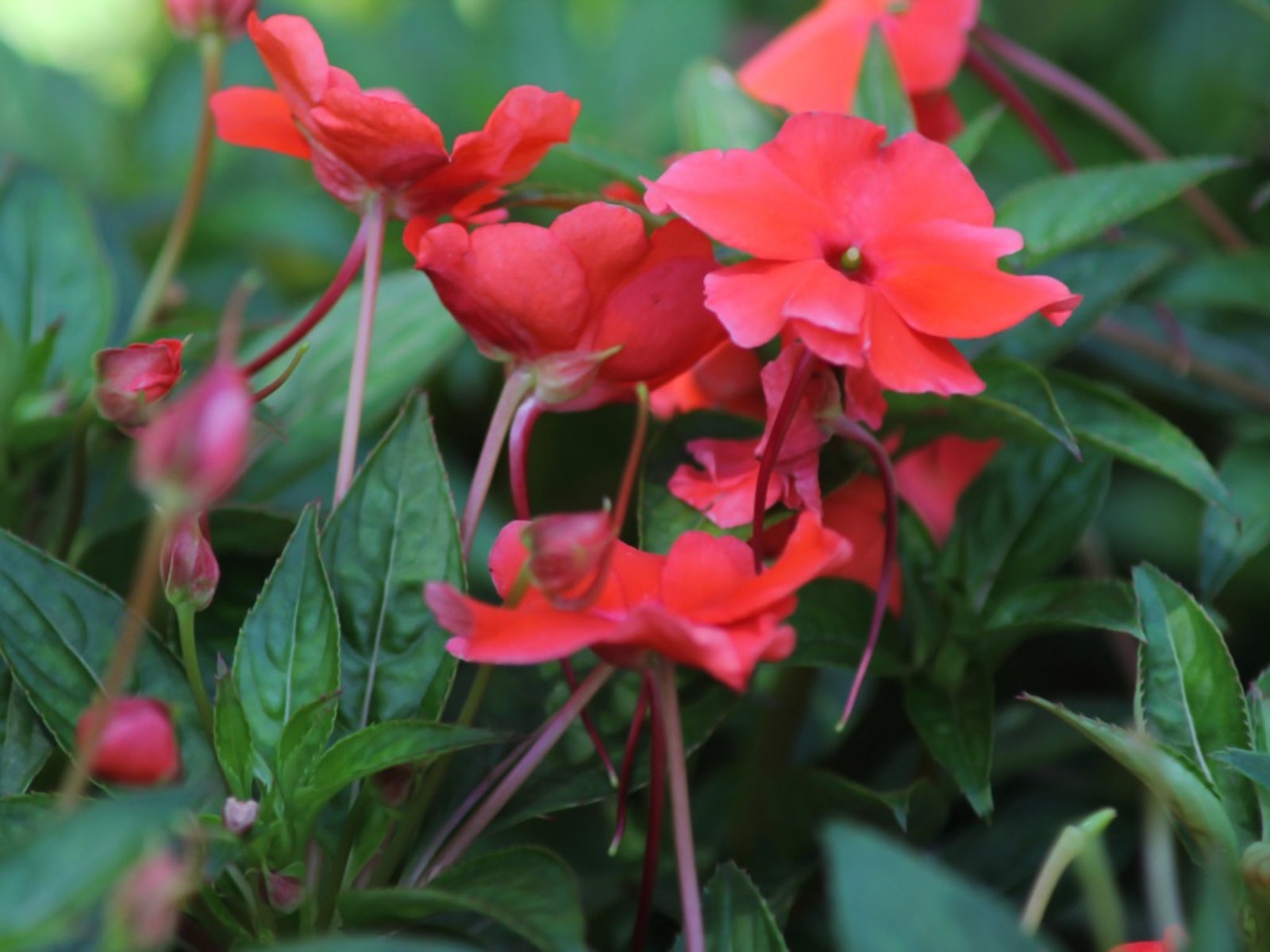Propagate Impatiens: Rooting Impatiens Cuttings


(Author of The Bulb-o-licious Garden) A common mainstay in many gardens either in containers or as bedding plants, impatiens are one of the easiest flowering plants to grow. These attractive flowers can be easily propagated as well. So if you're looking for an easy way to add more of these flowers to the garden, impatiens rooting takes little time or effort.
Rooting Impatiens Cuttings in Soil
Most of impatiens plants are propagated by cuttings. Choose a non-flowering stem on the impatiens with at least two leaf nodes and make a cut just below a node. Generally, impatiens stem cuttings are anywhere from 3 to 6 inches (8-15 cm.) in length. Although it's not required, the ends may be dipped in rooting hormone if desired. Insert each impatiens cutting in planting trays or pots filled with potting soil or a damp mix of vermiculite or perlite. Holes can be made beforehand using a pencil or even your finger. Be sure to pinch off any lower leaves on the impatiens cutting and then gently insert the cuttings into the soil. Water these generously and set them in bright, indirect light. Impatiens cuttings can also be placed directly in the garden. Just poke them right into the ground, preferably in a semi-shady location. It usually takes anywhere from a couple weeks to a month for impatiens rooting to take place. Once rooted, the plants can be transferred to their desired location.
How to Root Impatiens in Water
Impatiens rooting can also be achieved with water. In fact, impatiens cuttings root easily using this method. Simply remove any lower leaves and place the cuttings in a glass or vase of water, up to the first couple of nodes. Place it in a bright location out of direct sunlight, such as a well-lit windowsill. Replace the water daily or at least every other day to keep it fresh and clean. Once suitable impatiens rooting has taken place, the rooted impatiens cuttings can be transferred to another permanent location.
Impatiens Propagation with Seeds
While many people simply purchase new impatiens plants each year, it can be just as cost effective to propagate impatiens from seeds. Growing impatiens from seeds is easy. As opposed to buying impatiens seeds, use the seeds taken from the previous season. Seeds should be sown indoors at least six to eight weeks prior to the last expected frost in your area. Before planting, however, it's helpful to harden off, or acclimate, the young plants to outdoor conditions. To accomplish this, simply place them in a protected area outdoors, preferably in light shade, and then gradually increase the amount of light they receive over a period of several days.
Sign up for the Gardening Know How newsletter today and receive a free copy of our e-book "How to Grow Delicious Tomatoes".

Nikki Tilley has been gardening for nearly three decades. The former Senior Editor and Archivist of Gardening Know How, Nikki has also authored six gardening books.